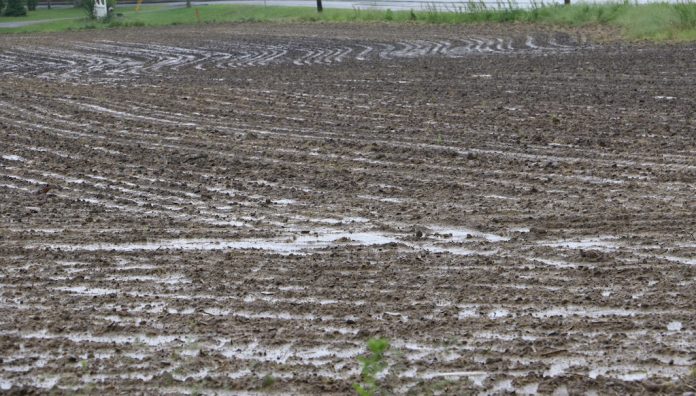Most American farmers spent the last week of May and the first week of June either driving through mud or stuck in it. Their two farming partners, Mother Nature and Uncle Sam, were little help; one brought threats of more rain and mud, the other threats of more tariffs and bailouts.
Farmers in my neighborhood, however, spent part of the time pulling their wide 16- and 24-row planters through narrow 24- and 48-hour planting windows to, literally, jam their 2019 corn crops into far-from-ideal ground with what my father often described as a “a lick and a promise.”
Should the window stay open long enough, they’ll slam in their soybeans, too, until the stomach-churning, never-to-be-forgotten 2019 planting season ends in either a fast flourish or a waterlogged flop. Then the really hard part starts.
Will all that mud, too-fast planting speeds, and washed out fields hamper germination, cut plant populations, and hammer yield?
It’s a good question with only one bad answer: It doesn’t matter because for most farmers it’s already too late to replant any corn, soybeans, or hope.
The powerless waiting — for tasseling and pollination of corn, blooming and pod-setting for beans — comes next. This year’s delayed planting means both crops will experience these critical make-or-break weeks in the frying-pan heat of late July and August. Again, yields hang in the balance.
And harvest? Like planting, it will be beyond late. In corn, late means wet and wet means grain drying and grain drying means more costs, more delays, more problems.
It’s little better for beans; unlike corn, mature soybeans re-absorb moisture to hamper harvest and clip yield.
For all of this to go well — a couple of dry weeks in June to finish planting, no steamy July, no frying-pan August, no frost in September, and no mud in October — will be the farm equivalent of a moon shot.
Washington not helping
Compounding those already awful odds, however, is your other partner, Uncle Sam. While you’ve been planting crops, he’s been sowing confusion.
It began May 23, when the U.S. Department of Agriculture (USDA) announced a second China tariff bailout package. This one, explained Secretary of Agriculture Sonny Perdue, would give up to $14.5 billion to farmers. Unlike the 2018 tariff bailout, however, the 2019 payout would be based on a formula that no one, including USDA, could explain.
Perdue’s timing hit like another rainstorm — it compounded farmers’ late-planting decisions. As was pointed out in this space last week, should farmers continue to plant corn or switch to beans? When their crop insurance “prevent planting” date arrives, should they file a claim or “mud in” something?
Most of the answers depended on who qualifies for the new bailout money.
USDA, however, said little even as planting windows across farm country began to close. Then, under pressure from farm groups to do something, Secretary Sonny allowed that some of the bailout money just might go to enhance prevented-planting insurance claims to help rain-soaked farmers. How much and to whom? Again, no one could say.
Incredibly, President Donald J. Trump then found another wrench to throw into ag’s already slipping gears. Beginning June 10, he announced, he would impose an increasing scale of import tariffs against Mexico, U.S. ag’s third largest export market, until it acted to stem the tide of illegal immigrants flooding across the U.S-Mexican border.
Wait, more tariffs even as USDA is trying to figure out how to administer a tariff bailout program announced just a week before?
Just when the muddy, murky mess couldn’t get any muddier and murkier, rumors began to float that some of the long-awaited, just-passed $19 billion hurricane relief package — that includes $3 billion for Perdue to dole out to rural America as he sees fit — might be added to prevented-planting payouts for farmers still facing plant-no plant choices.
Really? Well, sure. Wait, maybe. Ah, OK, maybe not.
Which begs the question: What else could possibly happen to make an already difficult farming year into an even bigger mess?
On second thought, I don’t want to know.














